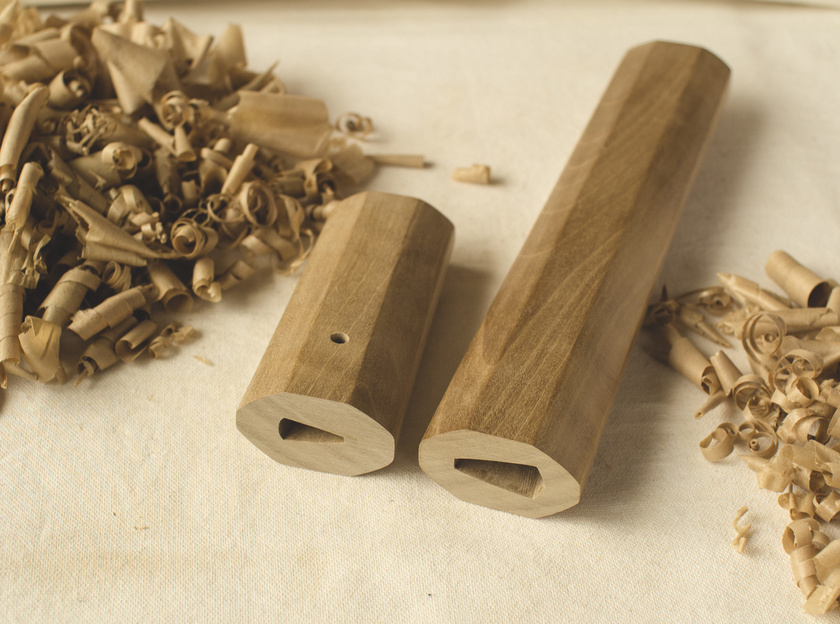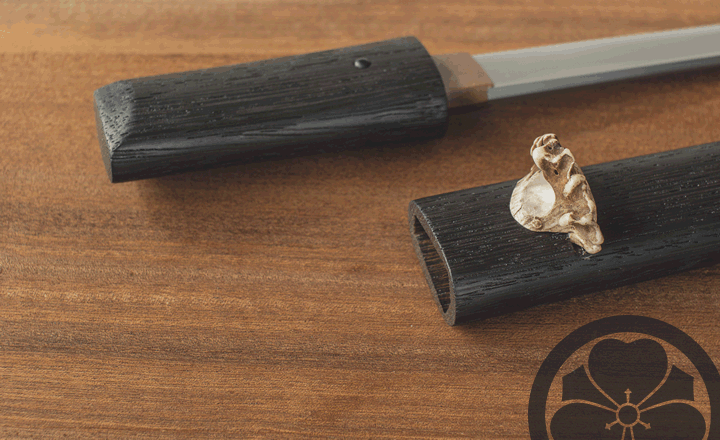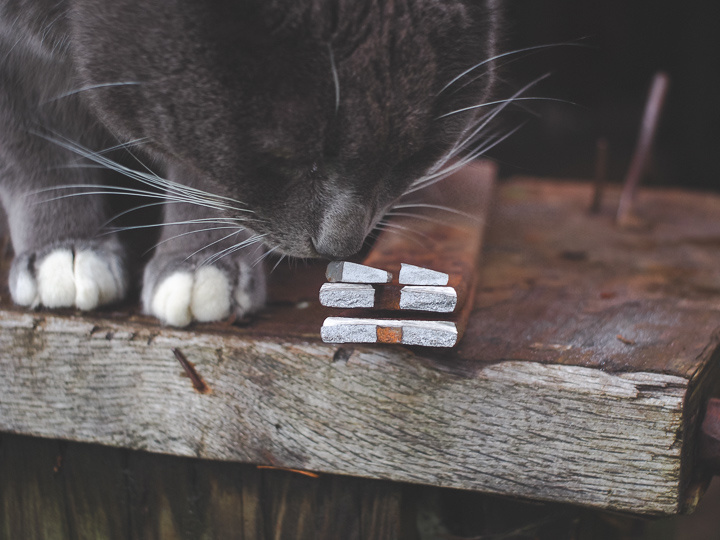"Inspired by the Japanese art of swordsmithing, Dave began researching and presenting on the Japanese sword almost 30 years ago and study of the craft became a framework for his knife making. After living several years in Japan he spent a decade focusing specifically on studying classical tanto geometry, forging, mounting, and finishing techniques, applying them to his work."
Higuchi ("fire entrance" ) is the tuyere, the point where the air enters the forge and temperatures are very high. In this case the fire clay to form the tuyere and fit it to the brick construction Japanese swordsmith forge is a traditional brasque recipe consisting of 6:2 charcoal powder/fines to natural clay, mixed with just enough water to stick together well. The forge must be allowed to dry fully before lighting or steam may crack the clay.
more about traditional forge construction: http://islandblacksmith.ca/2017/01/building-traditional-swordsmith-forge/
Making a habaki (blade collar) from reclaimed copper. Material is scrap copper from an electrical bus bar, forged and bent to shape, silver brazed with hard silver solder in the charcoal forge with fuigo, finish work done with files and rasps.
more photos and info on making habaki: http://islandblacksmith.ca/process/making-habaki/
Materials for the chisagatana style koshirae mounting include Japanese hounoki wood for the handle and scabbard, reclaimed copper bus bar for the habaki, reclaimed brass doorplate for a seppa, buffalo horn for the mekugi and kurikata, and an iron spike salvaged from thirty feet under the Pacific for the tsuba.
The centerpiece of the mounting comes from an outdoor antique market in Kyoto years ago, a gold-accented Edo-era fuchi made from fine nanako-ji (魚子地, fish roe) textured shakudo (a traditional alloy of gold, silver, and copper).
The tsuba sits between two Showa-era zouheitou (officer’s sword) o-seppa with pierced inome (猪の目, eye of the boar) motifs. The saya is finished in black sabi-nuri (rust texture) style ishime-ji (stone surface) made from natural source urushi lacquer and ground tea leaves, and the koiguchi band is antique.
more photos and info on the making of this tanto: http://islandblacksmith.ca/2019/07/inome-tanto/
1. Never pull or jerk the blade out with the power of your arms or you will lose control of the blade and possibly damage the saya (scabbard), yourself, or others. Use only small hand muscle movements to loosen it before drawing.
2. When unsheathing, make sure the edge is up, then pull just enough (a few mm) so that the habaki (blade collar) disengages its tight hold on the saya, then the blade may be easily and smoothly drawn, resting on the mune (spine) as it slides out.
3. One way to accomplish the initial part of the draw is to place a hand loosely on either side of the joint, topmost thumb knuckles together and then squeeze. The knuckles push against each other for only a short distance but it is enough to start the blade out in a controlled manner (this way is slightly more difficult and may take some practice)
4. Another method is to grasp the tsuka (handle) and saya tightly with a little space between your hands and then use your saya thumb or forefinger to push against the other ...
A shirasaya (白鞘) is a simple storage scabbard carved from a single piece of wood. Most often is it made from Honoki (Japanese Bigleaf Magnolia).
The goal of shirasaya is to provide a stable blade storage that is effectively airtight. All of the joints and meeting of koiguchi and tsuka should be as clean and tight as possible for this reason. As a general rule the tsuka should slide on until about 1mm gap remains below the habaki and then a single strike on the palm should take it the rest of the way home. When replacing the saya it should also slide on until about 1mm remains between the tsuka and saya and then moderate pressure should complete the closure. Some shirasaya do not even have mekugi and are carved to proper tolerances for a friction fit only.
Historically a blend of pure choji or clove and camellia oil would be used on the blade. These are oxidizing oils and would slightly lower the amount of oxygen inside a very small space as they react over time. However the ...

Ireko saya (入れ子鞘, nesting scabbard) forms a magnolia lining that protects the blade from the exterior hardwood. The design also allows scabbard makers to remove them for maintenance without splitting the hardwood apart.
more about the process of making this tanto: http://islandblacksmith.ca/2019/08/furusato-tanto/

Most of history was forged with steel that had no designated number or specified ingredient list. Historical smiths would interpret the quality and properties of steel based solely on careful observation and simple testing procedures.
To this day, Japanese swordsmiths work exclusively with unnumbered steel made with charcoal and iron sand in traditional smelting furnaces. They are trained and practiced in the art of understanding steel by studying it closely under different conditions. This article will discuss several basic techniques that can be used to determine the suitability of a piece of unknown reclaimed steel for making knives.
read on or see photos and more info here: http://islandblacksmith.ca/2016/12/testing-reclaimed-steel-for-knife-making/
Steel Overview
Simple steel is an alloy of mostly iron with a very small amount of carbon (generally less than 1%), and often other alloying metals in small amounts. Steels with high amounts of other ingredients will behave very differently to simple steels and can make it difficult to produce ...















